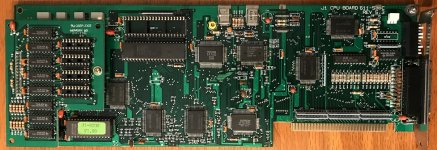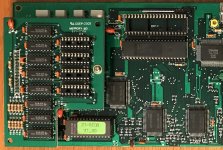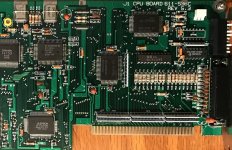The system is an Epson Apex 100 computer from 1988. The processor is on the center-top of the CPU board, which is placed as an expansion board onto the motherboard.
The system has been unable to power up since I got it several months ago. The power supply seems fine. Having been told that blown capacitors are often the problem, I looked for capacitors. Someone in my circle said this was a capacitor that I should replace.




1. What is this yellow component? It is marked C21 on the board, which seems to imply capacitor. There is absolutely no writing on the component. It does appear to be polarized, however, going by the line across the circle, showing to match the flat side of the component.
2. How do I tell if it is bad or good?
The system has been unable to power up since I got it several months ago. The power supply seems fine. Having been told that blown capacitors are often the problem, I looked for capacitors. Someone in my circle said this was a capacitor that I should replace.




1. What is this yellow component? It is marked C21 on the board, which seems to imply capacitor. There is absolutely no writing on the component. It does appear to be polarized, however, going by the line across the circle, showing to match the flat side of the component.
2. How do I tell if it is bad or good?
